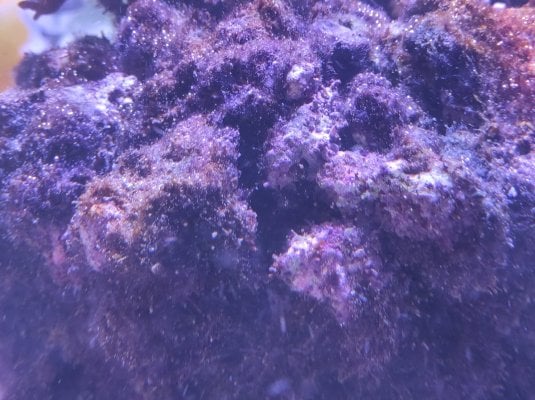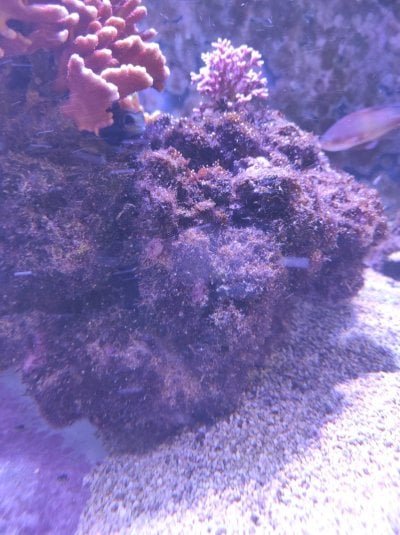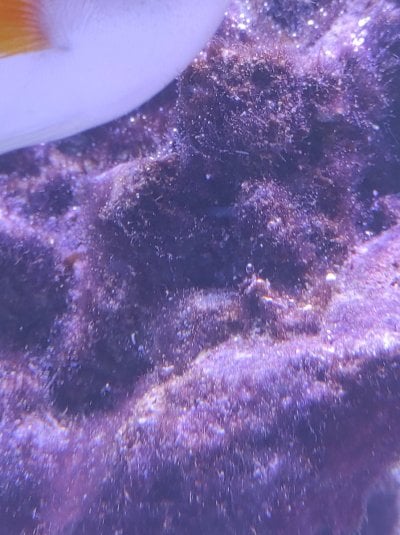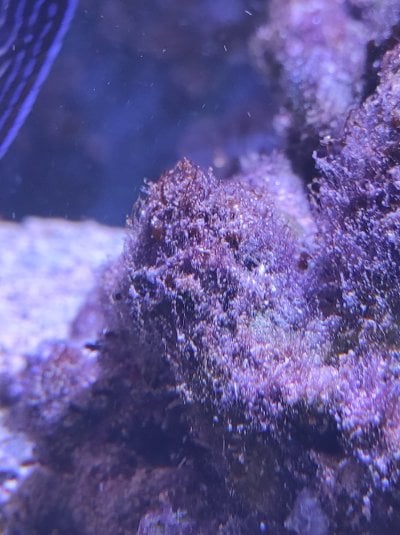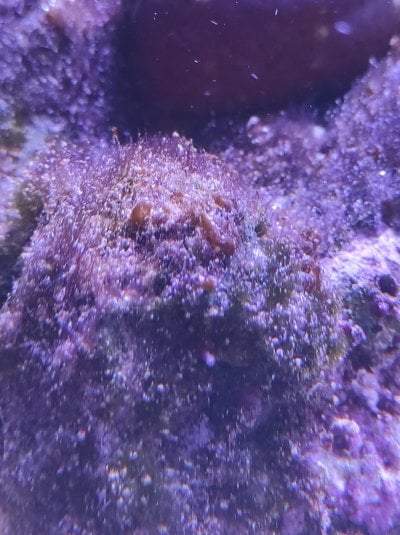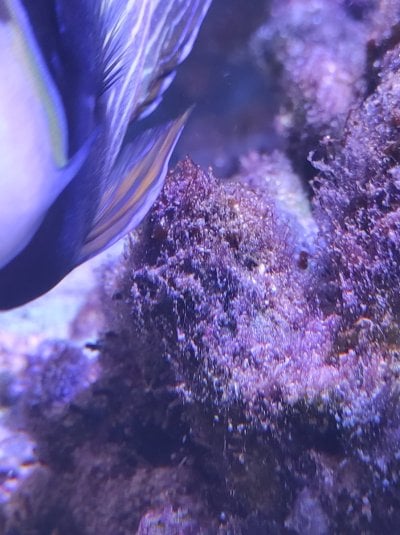Navigation
Install the app
How to install the app on iOS
Follow along with the video below to see how to install our site as a web app on your home screen.
Note: This feature may not be available in some browsers.
More options
You are using an out of date browser. It may not display this or other websites correctly.
You should upgrade or use an alternative browser.
You should upgrade or use an alternative browser.
Most Comprehensive Lyngbya Treatment Research for Infected Reef Tanks
- Thread starter stacksoner
- Start date
- Tagged users None
- Joined
- Jul 29, 2018
- Messages
- 810
- Reaction score
- 1,165
Interesting thread. I liked the comment that an invasive organism could be multiple organisms. I wonder if that is more accurately called an invasive ecosystem which sound like science fiction.
PDF link below for those who want to read it.
An Integrated Bayesian Network approach to Lyngbya majuscula bloom initiation
- Joined
- Sep 21, 2018
- Messages
- 7,571
- Reaction score
- 7,962
Thanks for the link. The Bayesian Network topic is fascinating but almost out of reach. The references on Lyngbya which I am going through are very informative.PDF link below for those who want to read it.
An Integrated Bayesian Network approach to Lyngbya majuscula bloom initiation
Will Amoxicillin work instead of Azithromycin?
Which is more gentle on coral?AZITROMYCIN or peroxide
Azithromycin or peroxide?
On the frag rack is chrysophytes
ID isn’t as important as action, however.
True, but if i dunnnno what it is, i cant really know what kind of action i need to take...but thanks.
are the stuff on the glass chrysophytes as well?
Has anyone had success with Azithromycin? I’m inclined to try it. I find it ironic that I have both lyngbya and GHA. My NO3 and PO4 test 0. I’ve been controlling the lyngbya by brushing, polishing filter, filter roller, floss cup, and me with a brine shrimp net. Now I fear it’s in my plumbing too. I’ve been doing weekly 15% water changes. I’m 1-3/4 years in with my first reef tank and about to lose my mind. I would quit if I didn’t have so much invested. Please help.
So there is no need to treat again after a period of time unless the lyngbya comes back? I have both Lyngbya and GHA and my NO3 and PO4 test 0. My chaeto is growing fine albeit covered in GHA. Any additional advise would be greatly appreciated. ThanksThe Lyngbya sp. is a species of cyanobacteria whose colony takes on filamentous form, but still, it is a cyanobacteria. It is easily controlled with the antibiotic Azithromycin, at the dose of 1.0 mg / liter, applied once (single dose).
As much of Lyngbya as possible should be removed before applying the antibiotic because this cyanobacterium is toxic and can release toxins upon dying and can affect the animals in the aquarium.
Once cleaned, as best as possible, place a sock filter and wait until the water is clean, before treating.
The skimmer cup and activated carbon should be removed for 4 days so that the medicine is not withdrawn.
After 04 days you can return these equipment and, after another 04 days, perform a partial water exchange of 20% to stabilize the system. From this exchange, continue with the normal routine.
Regards
PS: At this concentration of 1.0 mg / liter, you can use Azithromycin directly in the tank, safely, without affecting the animals. You should monitor the biological filter with ammonia and nitrite tests for the duration of the treatment. THE SKIMMER SHOULD STAY CONNECTED, WITHOUT CUP, FOR WATER AERATION.
Also, I see Azithromycin comes tablets, oral, and injectable. Do you crush tablets or is injectable preferable? (Assuming you can get it.The Lyngbya sp. is a species of cyanobacteria whose colony takes on filamentous form, but still, it is a cyanobacteria. It is easily controlled with the antibiotic Azithromycin, at the dose of 1.0 mg / liter, applied once (single dose).
As much of Lyngbya as possible should be removed before applying the antibiotic because this cyanobacterium is toxic and can release toxins upon dying and can affect the animals in the aquarium.
Once cleaned, as best as possible, place a sock filter and wait until the water is clean, before treating.
The skimmer cup and activated carbon should be removed for 4 days so that the medicine is not withdrawn.
After 04 days you can return these equipment and, after another 04 days, perform a partial water exchange of 20% to stabilize the system. From this exchange, continue with the normal routine.
Regards
PS: At this concentration of 1.0 mg / liter, you can use Azithromycin directly in the tank, safely, without affecting the animals. You should monitor the biological filter with ammonia and nitrite tests for the duration of the treatment. THE SKIMMER SHOULD STAY CONNECTED, WITHOUT CUP, FOR WATER AERATION.
I dosed 500 mg Azithromycin for my 130g tank/sump. It’s been 4 days and I put skimmer cup back on and am running carbon. I brushed some off the rocks on day 3. Today is day 5 and it’s definitely coming back. Any advice would be so appreciated.Also, I see Azithromycin comes tablets, oral, and injectable. Do you crush tablets or is injectable preferable? (Assuming you can get it.
What can I say about Lyngbya that hasn't been said about Osama Bin Laden?
I have scoured the internet and forums alike trying to find a proven reef tank treatment for Lyngbya, and was surprised that there's no consensus on how to kill this reef tank cyanobacterial terrorist that wears hair algae's uniform.
Here's what my tank looks like:
I am pretty sure that I have been dealing with this in one form or another for years now, but not anywhere close to the magnitude of the past week. The exponential growth killed my blue tang and yellow tang in under two hours.
I have tried Phosphate removers, Chemiclean, and Fluconozole with unimpressive results.
I'm now running a 6th grade, science fair level experiment on various antibiotics and treatments to see which one is the most effective at killing this. If anyone has a well-documented treatment method that I'm missing, please post it here and I'll send you a $25 BRS gift card
And now the starting line up of meds etc I am now testing with Lyngbya samples and tank water. Photos to come shortly.
Metroplex
Triple Sulfa
Furan 2
Flatworm Exit
Nopox
General Cure
Fungus Cure
H2O2
Chemclean
Lugols
Neoplex
Kanaplex
Lice/Worm Aquarium Treatment
Flatworm Stop
Rowaphos
Control Sample
If anyone has any suggestions on how to improve testing, I'm happy to hear your feedback.
Twinstar. Adds c02 to tank
This thread is tremendous! Been trying to figure out how to go about this same issue we are dealing with in our tank. Glad you are all here sharing good info. I'll be finding a fish dr.
Similar threads
- Replies
- 24
- Views
- 262
- Replies
- 2
- Views
- 117
- Replies
- 6
- Views
- 215








